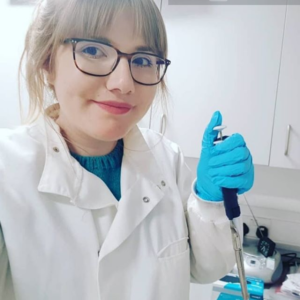 About me
About me
I completed my undergraduate degree in Mathematics and Statistics at the University of York. In the final year of my degree, I undertook a dissertation titled “Who Are Your Parents?” where I produced a feasible statistical model to predict the probability of successfully identifying recombinant sites through DNA sequencing. I really enjoyed applying the computational skills obtained throughout my Mathematics degree in a biological context and knew that this was something I wanted to pursue further. Throughout my undergraduate degree, I was also exposed to the field of artificial intelligence. I gained a huge appreciation for the extensive applications of machine learning and pattern recognition approaches, methods which will certainly revolutionise biological and medical research. My PhD project encompasses all of these aspects, an interdisciplinary project which combines biology, machine learning and image processing.
My project
The primary aim of my project is to develop a novel, automated method for cell identification and cell fate prediction in heterogeneous populations. Currently, cell identification relies on measurement by trained personnel or technology involving use of fluorescence which perturbs natural cell function and interrupts cell division. Automated cell identification poses benefits for biological research and medical diagnosis, with high-throughput capabilities allowing for consistent, objective processing of data on a much larger scale than is possible manually. Previous research has primarily focused on identification of cells by screening just one still image with no consideration of changes in cell behaviour over time. This project involves the use of label-free ptychographic imaging and machine learning methods to obtain a minimal set of features needed to characterise cell types in order to produce an algorithm for automated cell type discrimination. We aim to use time-series analysis to predict the fate of individual cells, for example to predict cellular drug resistance when treating cancer cells with chemotherapy drugs. We will utilise the mathematical models and algorithms developed within the project to identify microglia, the resident immune population in the brain and spinal cord, within a heterogeneous culture of brain cells including neurons and astrocytes. We will then be able to explore the basic biological mechanisms of microglial cells to interrogate the behaviour of a relatively understudied cell which plays a significant role in Parkinson’s disease, Alzheimer’s, and many other neurodegenerative diseases.
Connect
LinkedIn: https://www.linkedin.com/in/laura-wiggins-933145123/?originalSubdomain=uk

